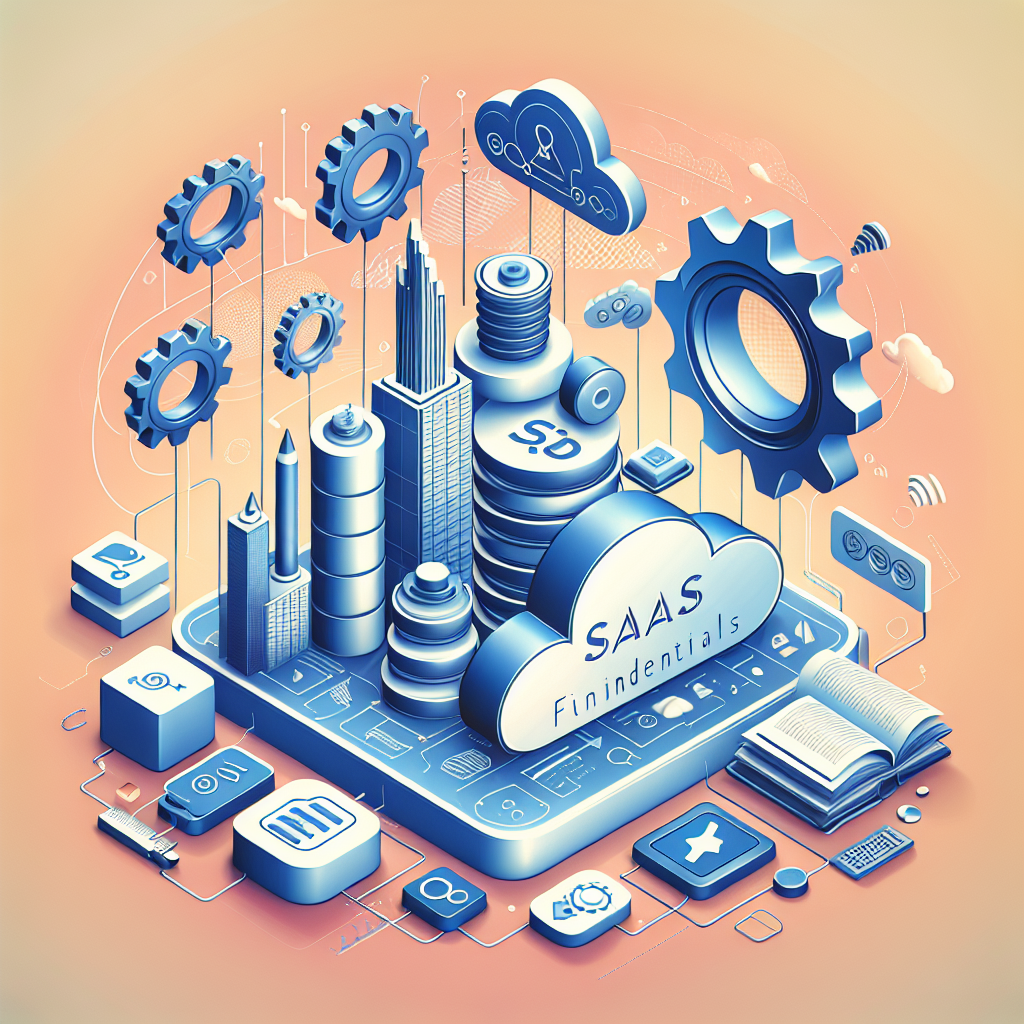Mastering SaaS Fundamentals: 5 Critical Principles for Success
In the fast-paced world of Software as a Service (SaaS), success often seems just a brilliant idea away. However, the reality is far more complex and demanding. While many aspiring entrepreneurs are drawn to SaaS by promises of passive income and overnight success, the truth is that building a thriving SaaS business requires a deep understanding of core principles and relentless execution.
Today, we’ll dive into five critical SaaS fundamentals that separate successful ventures from those that struggle to gain traction. These aren’t just theoretical concepts – they’re battle-tested strategies used by industry leaders to build multi-million dollar businesses. Whether you’re a seasoned entrepreneur or just starting your SaaS journey, mastering these principles is *essential* for long-term success.
The SaaS Landscape: Setting the Stage
Before we delve into the core fundamentals, it’s *crucial* to understand the current SaaS landscape. The industry is experiencing unprecedented growth, with recent industry analysis projecting a 15.3% annual growth rate through 2025. This explosive expansion is driven by increasing digital transformation across all sectors and the growing preference for cloud-based solutions.
However, with great opportunity comes intense competition. The low barriers to entry in SaaS mean that new players are constantly entering the market, making it more challenging than ever to stand out and capture market share. In this environment, having a solid grasp of SaaS fundamentals isn’t just an advantage – it’s a necessity for survival.
“The future of SaaS lies in understanding the intersection of technology and human behavior.”
Dr. Sarah Mitchell, Technology Innovation Specialist at MIT Technology Review
With this context in mind, let’s explore the five critical SaaS fundamentals that many beginners overlook, but industry leaders swear by.
1. Product-Market Fit: The Foundation of Success
The first and perhaps most *crucial* fundamental is achieving product-market fit. This concept goes beyond simply creating a good product – it’s about developing a solution that addresses a specific, pressing need in the market. Many SaaS startups fail because they build products in search of a problem, rather than identifying a problem first and then crafting a tailored solution.
Achieving product-market fit requires deep market research, continuous customer feedback, and a willingness to pivot when necessary. It’s an iterative process that demands patience and perseverance. According to Business Analytics Quarterly, 73% of businesses implementing strategic product-market fit strategies see improved performance within 6 months.
“Product last, marketing first. You need to change your mindset to realize that marketing and sales are what makes or breaks a new product or a new startup idea.”
MicroConf
This quote underscores a critical point: understanding your market should precede product development. By focusing on marketing and sales first, you gain invaluable insights into customer needs and pain points, which can then inform your product strategy.
2. Customer Acquisition: The Lifeblood of Growth
Once you’ve achieved product-market fit, the next fundamental to master is customer acquisition. In the SaaS world, your ability to consistently attract and convert new customers is paramount. This involves developing a deep understanding of your target audience, crafting compelling value propositions, and implementing effective marketing and sales strategies.
One key aspect of customer acquisition in SaaS is the concept of Customer Acquisition Cost (CAC). Successful SaaS companies obsess over optimizing their CAC, ensuring that the cost of acquiring a new customer is significantly lower than the lifetime value of that customer. This focus on efficient acquisition is *crucial* for sustainable growth.
“What we’re seeing with SaaS customer acquisition is not just a trend, but a fundamental shift in how industries operate.”
Michael Thompson, Senior Industry Analyst at Global Business Insights
The shift Thompson refers to is the move towards more data-driven, personalized acquisition strategies. With the wealth of data available to SaaS companies, there’s an unprecedented opportunity to tailor acquisition efforts to specific customer segments, dramatically improving conversion rates and lowering CAC.
3. Customer Retention: The Key to Sustainable Growth
While acquiring new customers is *crucial*, retaining existing ones is equally, if not more, *important* in the SaaS model. Customer churn – the rate at which customers stop using your service – can quickly erode your revenue and growth if not managed effectively. Successful SaaS companies invest heavily in customer success initiatives, ensuring that users derive maximum value from their product.
Retention strategies might include proactive customer support, regular check-ins, product education, and continuous feature improvements based on user feedback. The goal is to make your product an indispensable part of your customers’ workflow, increasing switching costs and fostering loyalty.
Technology Trends Report 2024 indicates that adoption of customer retention technologies has increased by 45% since 2023, highlighting the growing focus on this critical area.
“Nothing happens in a business until someone pays you money. Everything you do before then is just a hobby, it’s just wasted time.”
MicroConf
This quote emphasizes the importance of not just acquiring customers, but retaining them and ensuring they continue to pay for your service. In SaaS, the real value often comes from long-term customer relationships, not just initial sales.
4. Metrics-Driven Decision Making
The fourth fundamental that sets successful SaaS companies apart is their reliance on data and metrics to drive decision-making. In the fast-paced SaaS environment, gut feelings and hunches aren’t enough – you need hard data to guide your strategy and operations.
Key metrics that SaaS leaders obsess over include Monthly Recurring Revenue (MRR), Customer Lifetime Value (CLV), Churn Rate, and Net Promoter Score (NPS). By closely monitoring these and other relevant metrics, SaaS companies can quickly identify areas for improvement and make data-driven decisions to optimize their business.
Enterprise Technology Survey 2024 reveals that companies utilizing advanced analytics and metrics-driven decision-making report 28% higher efficiency rates. This underscores the competitive advantage that comes from mastering this fundamental.
“The integration of advanced analytics has become *essential* for SaaS companies looking to remain competitive in today’s market.”
Lisa Chen, Strategic Business Consultant at Innovation Partners LLC
Chen’s insight highlights the growing importance of not just collecting data, but effectively analyzing and acting upon it to drive business performance.
5. Continuous Innovation and Adaptation
The final fundamental that 99% of SaaS beginners often overlook is the need for continuous innovation and adaptation. The SaaS landscape is constantly evolving, with new technologies, customer expectations, and competitive threats emerging regularly. Successful SaaS companies don’t rest on their laurels – they continuously innovate to stay ahead of the curve.
This might involve regularly releasing new features, exploring adjacent markets, or even pivoting the entire business model if necessary. The key is to maintain a culture of innovation and agility, where change is embraced rather than feared.
Market Research International projects that global spending on SaaS innovation and R&D will reach $2.4 billion by 2025, highlighting the industry’s commitment to pushing boundaries and driving progress.
“A developer who can also market or sell is extremely dangerous in the best possible way. Coding is not the superpower you probably think it is.”
MicroConf
This quote emphasizes the importance of well-rounded skills in the SaaS world. While technical prowess is *important*, the ability to innovate, market, and sell your innovations is what truly sets successful SaaS entrepreneurs apart.
Putting It All Together: The Path to SaaS Success
Mastering these five fundamentals – product-market fit, customer acquisition, customer retention, metrics-driven decision making, and continuous innovation – is *essential* for anyone looking to succeed in the competitive SaaS landscape. While each principle is powerful on its own, the real magic happens when they’re implemented together as part of a cohesive strategy.
Remember, success in SaaS isn’t about following a simple formula or riding a wave of hype. It’s about deeply understanding these core principles, relentlessly executing on them, and continuously adapting as the market evolves. By focusing on these fundamentals, you’ll be well-positioned to build a sustainable, growing SaaS business that stands the test of time.
Looking Ahead: The Future of SaaS
As we look to the future, it’s clear that the SaaS industry will continue to evolve and present new challenges and opportunities. Emerging technologies like artificial intelligence, blockchain, and edge computing are poised to reshape the SaaS landscape, creating new possibilities for innovation and disruption.
However, regardless of technological advancements, the fundamentals we’ve discussed will remain *crucial*. The SaaS companies that thrive in the coming years will be those that can adapt these principles to new contexts, leveraging cutting-edge technology while staying grounded in the core tenets of product-market fit, customer focus, data-driven decision making, and continuous innovation.
Conclusion: Your SaaS Journey Starts Now
Whether you’re just starting your SaaS journey or looking to take your existing business to the next level, focusing on these five critical fundamentals is key. Remember, success in SaaS isn’t about quick wins or overnight riches – it’s about building a sustainable, value-driven business that solves real problems for your customers.
By mastering these principles and committing to continuous learning and adaptation, you’ll be well-equipped to navigate the challenges and seize the opportunities in the dynamic world of SaaS. The path may not be easy, but for those willing to put in the work and stay true to these fundamentals, the potential for success is limitless.
Start by evaluating your current approach against these five fundamentals. Where are you strong, and where do you need improvement? Develop a plan to address your weak areas, and don’t be afraid to seek guidance from mentors or industry experts. Remember, in SaaS, as in many areas of life, success often comes not from knowing something others don’t, but from consistently executing on the fundamentals that many overlook.
Your SaaS success story begins with mastering these principles. Are you ready to take the first step?





Leave a Reply